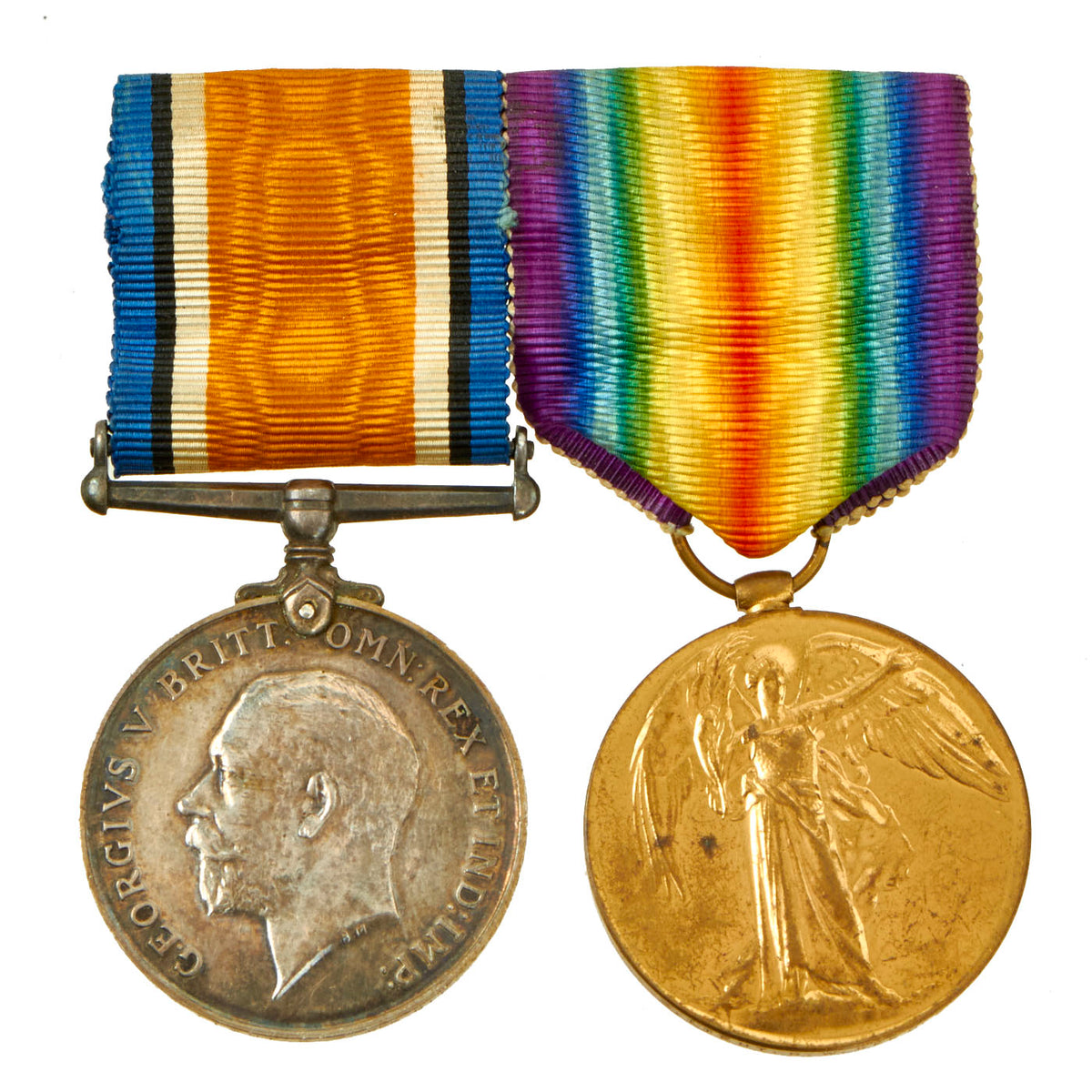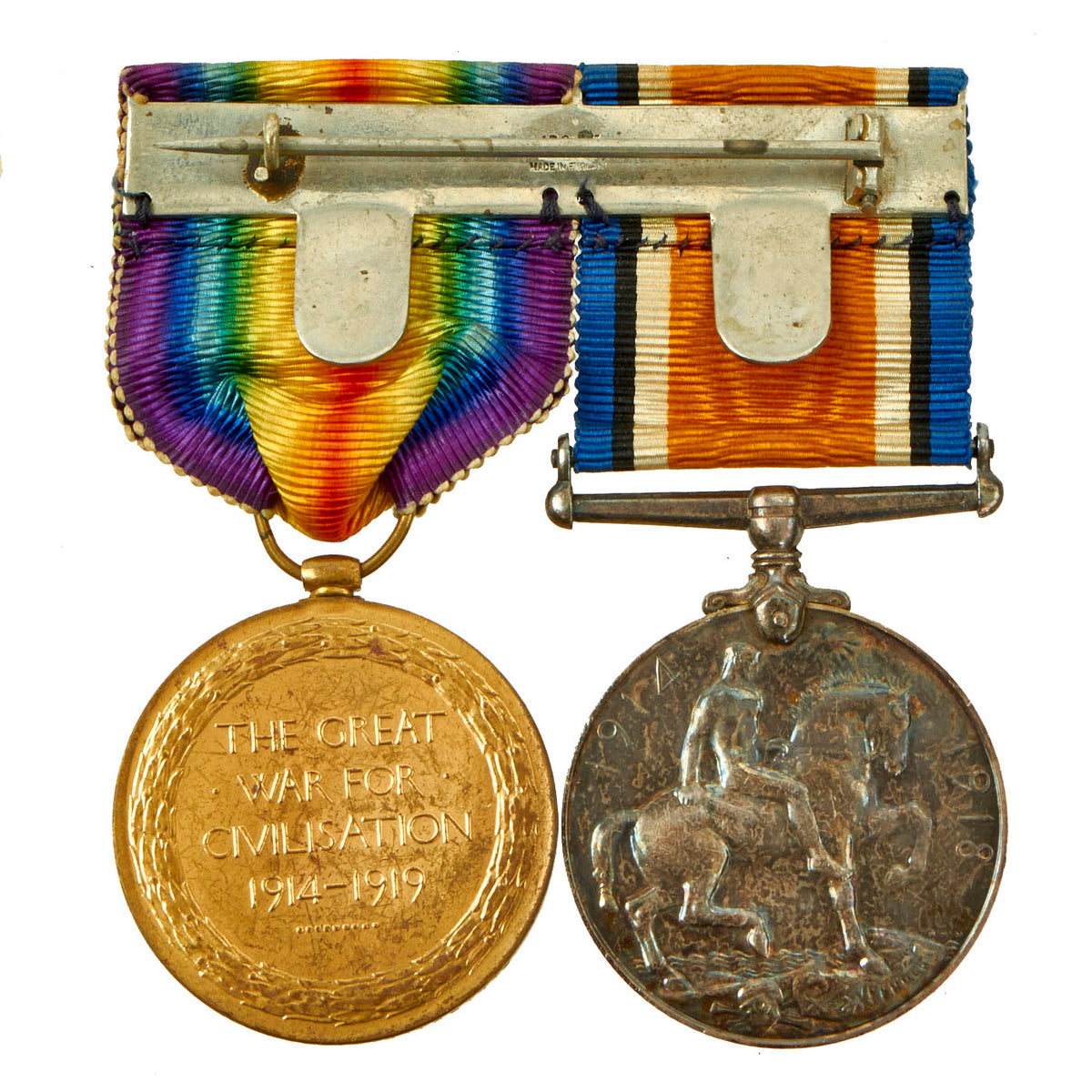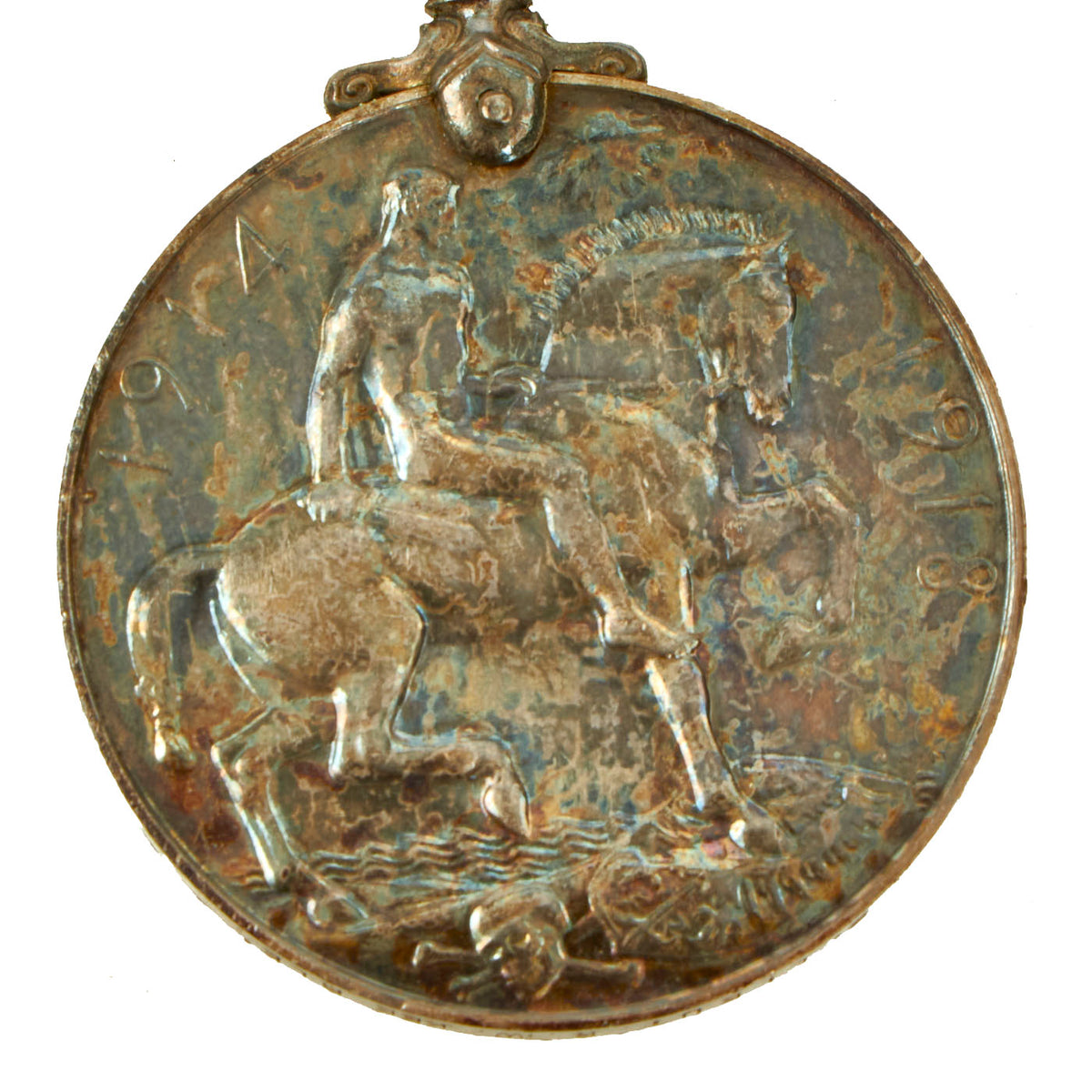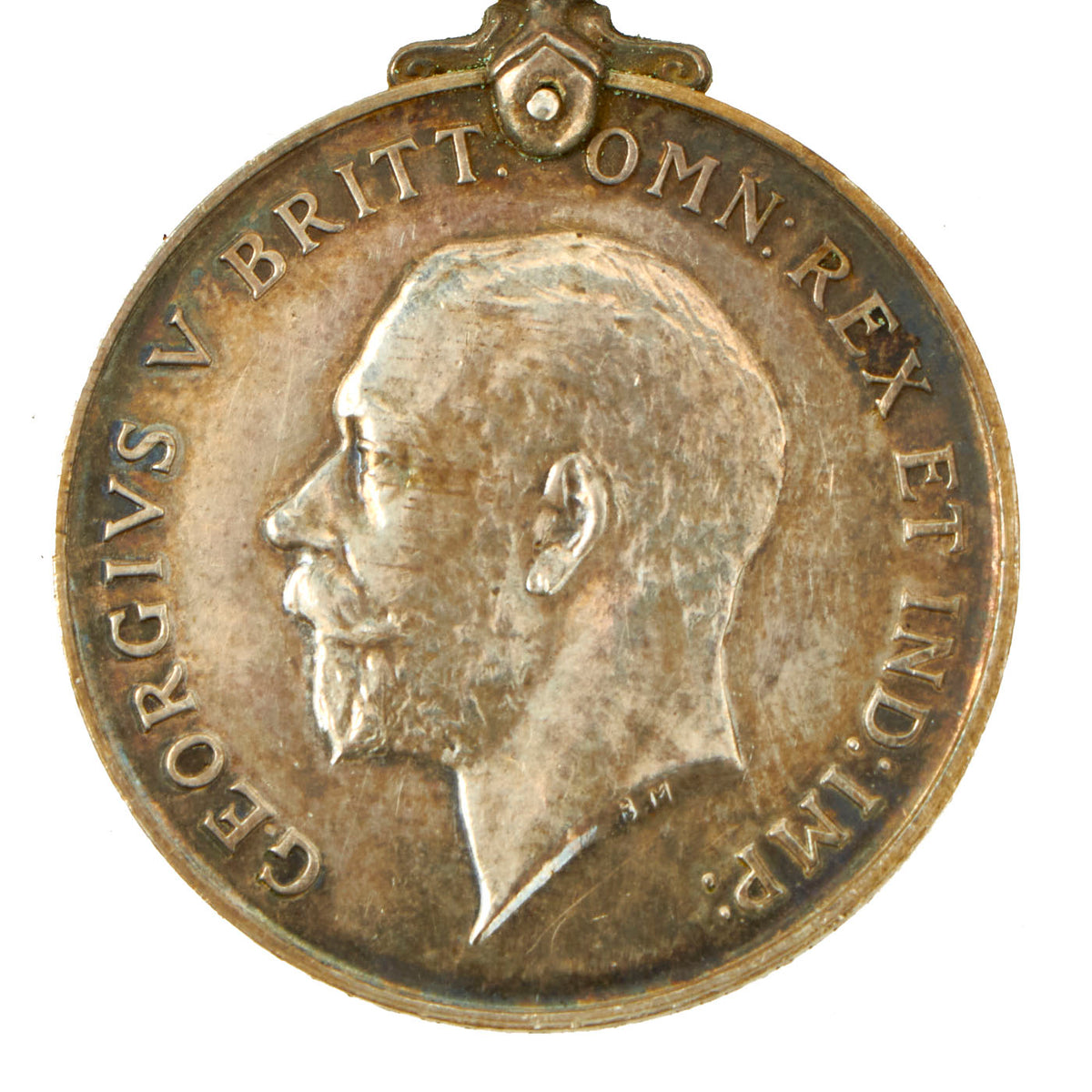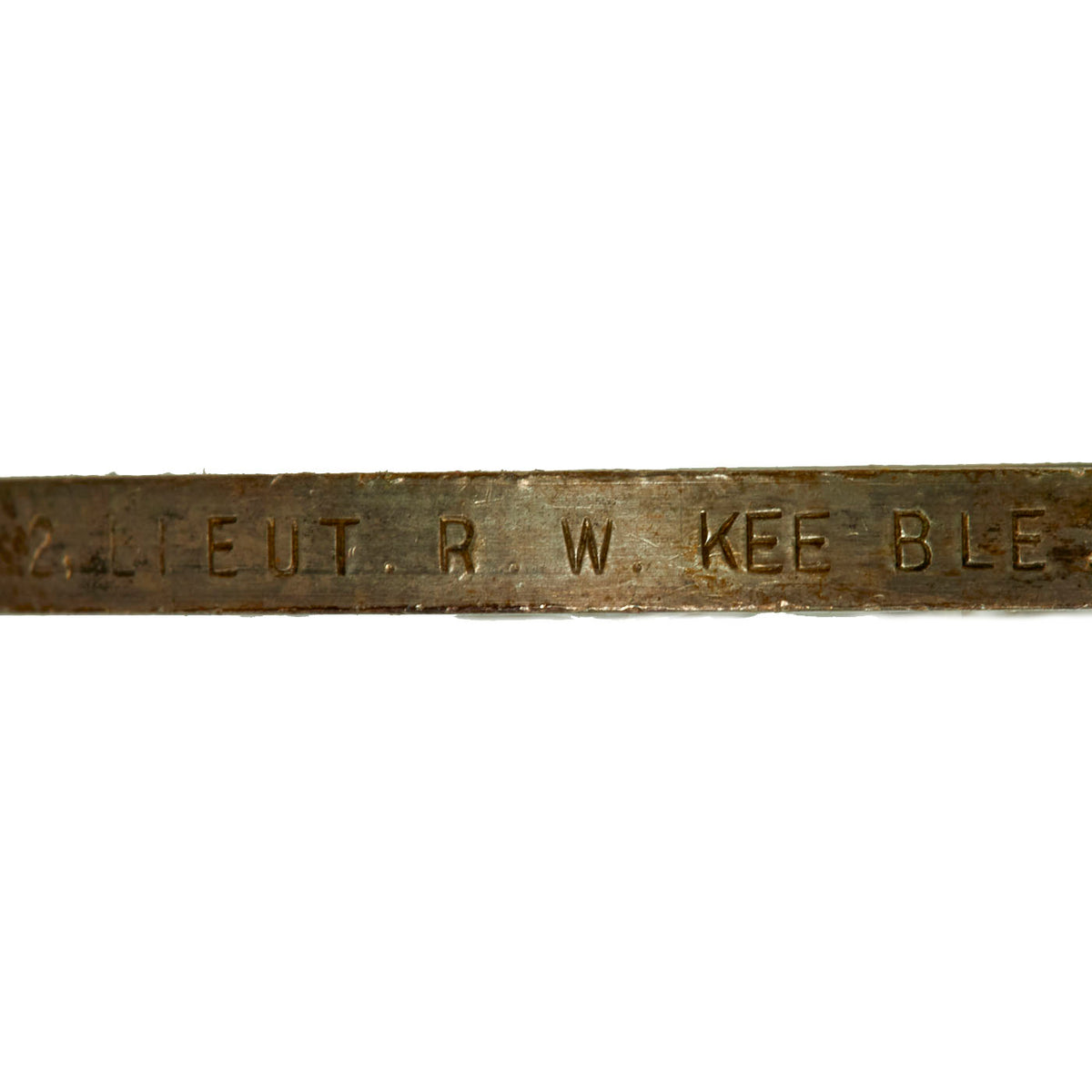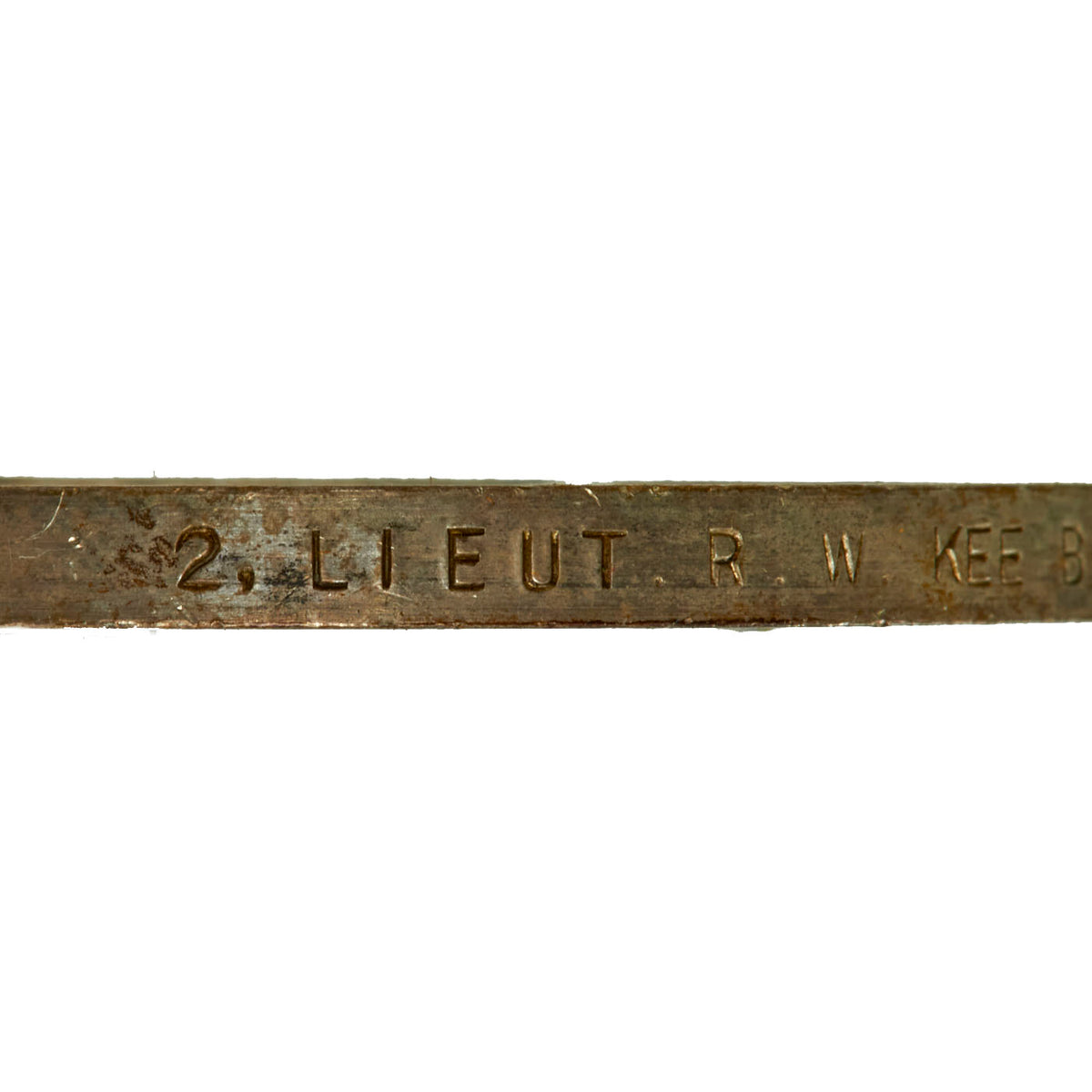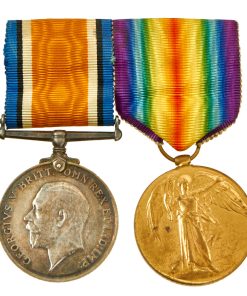Original British WWI Royal British Army Named Rifle Brigade Medals Grouping – 2nd Lieutenant W. R. Keeble Original Items
$ 250,00 $ 100,00
Original Items: Only One Grouping Available. The Rifle Brigade (The Prince Consort’s Own) was an infantry rifle regiment of the British Army formed in January 1800 as the “Experimental Corps of Riflemen” to provide sharpshooters, scouts, and skirmishers. They were soon renamed the “Rifle Corps”. In January 1803, they became an established regular regiment and were titled the 95th Regiment of Foot (Rifles). In 1816, at the end of the Napoleonic Wars, they were again renamed, this time as the “Rifle Brigade”.
The unit was distinguished by its use of green uniforms in place of the traditional redcoat as well as by being armed with the Baker rifle, which was the first British-made rifle accepted by the British Army in place of smooth-bore muskets. The 95th was the first regular infantry corps in the British Army to be so armed. They performed distinguished service in both the First and Second World Wars. Post war, in 1958 the regiment formed part of the Green Jackets Brigade as 3rd Green Jackets and was amalgamated with the 1st Green Jackets (43rd and 52nd) and the 2nd Green Jackets (King’s Royal Rifle Corps) to form the Royal Green Jackets on 1 January 1966.
The medals featured on this bar Both Are Rim Engraved As 2. LIEUT. R. W. KEEBLE
The medals consist of the following:
– WWI Victory Medal (United Kingdom): The Victory Medal (also called the Inter-Allied Victory Medal) is a United Kingdom and British Empire First World War campaign medal.
The award of a common allied campaign medal was recommended by an inter-allied committee in March 1919. Each allied nation would design a ‘Victory Medal’ for award to their own nationals, all issues having certain common features, including a winged figure of victory on the obverse and the same ribbon. Fourteen countries finally awarded the medal.
– British War Medal: The British War Medal is a campaign medal of the United Kingdom which was awarded to officers and men of British and Imperial forces for service in the First World War. Two versions of the medal were produced. About 6.5 million were struck in silver and 110,000 in bronze, the latter awarded to, among others, the Chinese, Maltese and Indian Labor Corps.
These are both lovely examples that come more than ready for further research and display!
Fast Shipping with Professional Packaging
Thanks to our longstanding association with UPS FedEx DHL, and other major international carriers, we are able to provide a range of shipping options. Our warehouse staff is expertly trained and will wrap your products according to our exact and precise specifications. Prior to shipping, your goods will be thoroughly examined and securely secured. We ship to thousands clients each day across multiple countries. This shows how we're dedicated to be the largest retailer on the internet. Warehouses and distribution centres can be located throughout Europe as well as the USA.
Note: Orders with more than one item will be assigned a processing date depending on the item.
Before shipping before shipping, we'll conduct a thorough inspection of the items you have ordered. Today, the majority of orders will be delivered within 48 hours. The delivery time will be between 3-7 days.
Returns
The stock is dynamic and we cannot completely manage it because multiple stakeholders are involved, including our factory and warehouse. So the actual stock may alter at any time. It's possible that you may not receive your order once the order has been made.
Our policy is valid for a period of 30 days. If you don't receive the product within 30 days, we are not able to issue a refund or an exchange.
You can only return an item if it is unused and in the same state as the day you received it. You must have the item in its original packaging.
Related products
Uncategorized
Uncategorized
Australian WWII Owen MK1 Machine Carbine SMG Custom Fabricated Replica with Sling Original Items
Uncategorized
Uncategorized
Uncategorized
Uncategorized
Uncategorized
Band of Brothers ORIGINAL GERMAN WWII Le. F.H. 18 10.5cm ARTILLERY PIECE Original Items
Uncategorized
Uncategorized
Armored Burgonet Helmet & Polearm from Scottish Castle Leith Hall Circa 1700 Original Items
Uncategorized
Uncategorized
Uncategorized
Uncategorized
Uncategorized
Uncategorized
Armoured Fighting Vehicles of the World: AFVs of World War One (Hardcover Book) New Made Items
Uncategorized
Uncategorized
